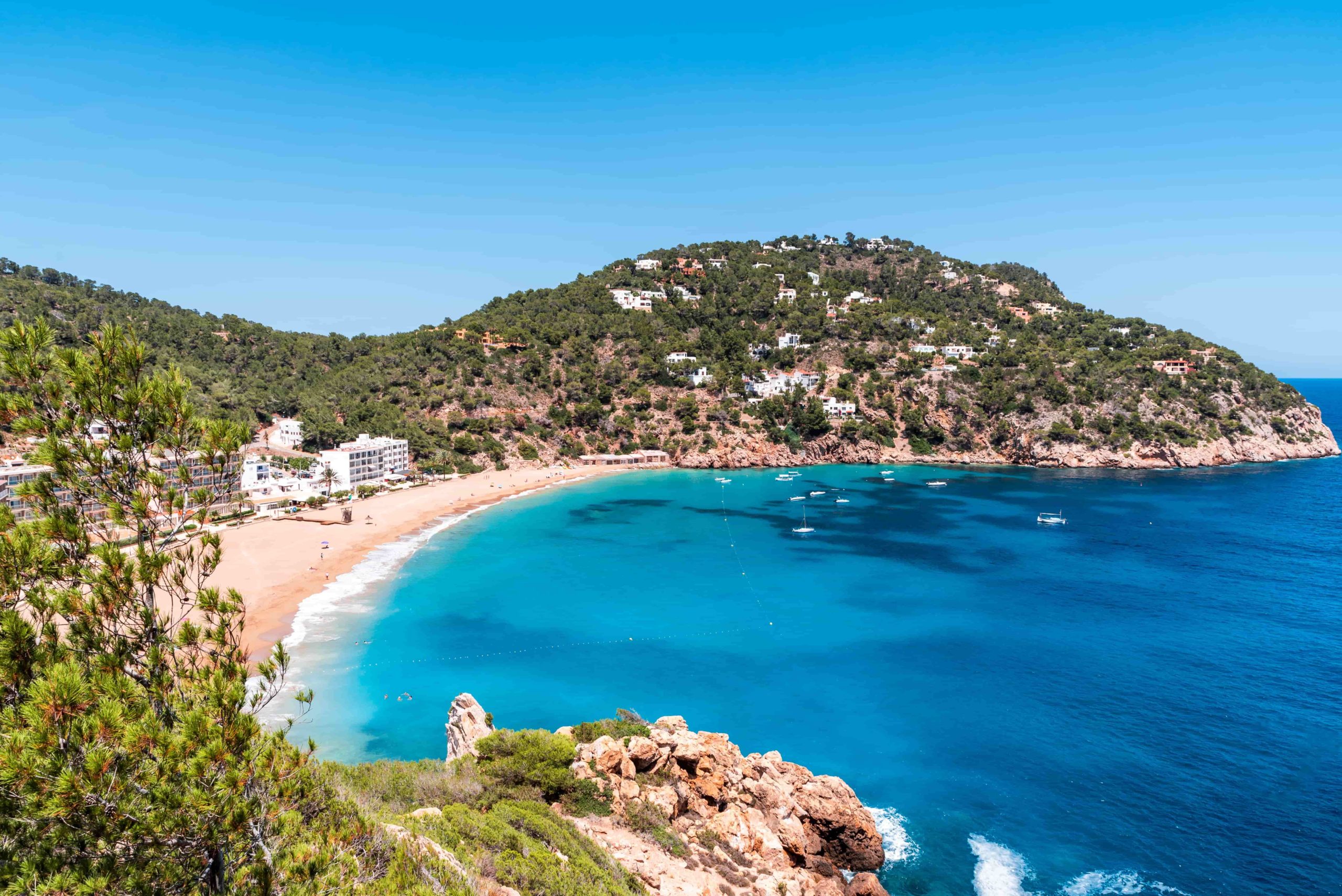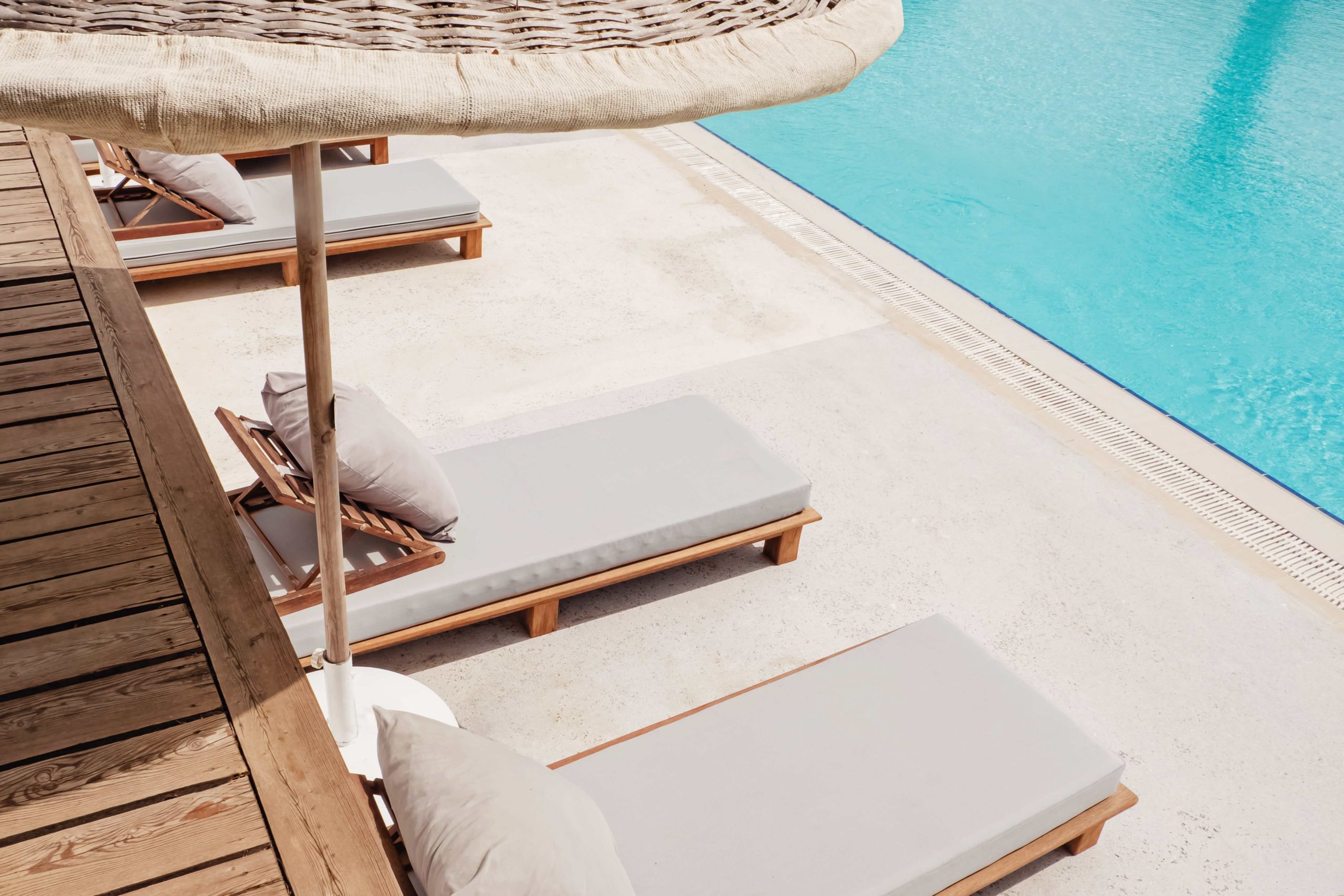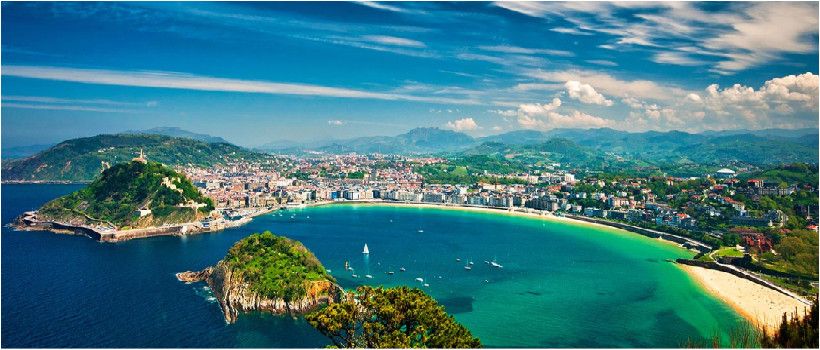The splendor of the best times has returned strongly to Donostia. The beginnings of this splendor go back 174 years ago, when in 1845, doctors advised queen Isabel II (María Cristina de Borbon’s daughter) to bathe in La Concha as a treatment for her skin problems. The activity, which was considered eccentric, soon became a fashion; from that moment, the high society began to spend their summers in the north of Spain.

Years later, Maria Cristina de Austria, Alfonso XII’s widow (Isabel II’s son), was a key character of the city’s touristic boom, as she converted San Sebastian in the summer court of the Spanish crown. New buildings were built with a marked French style of the Belle Époque that, together with the therapeutic and relaxing effects of the waters of the iconic La Concha beach, it attracted other notable people of the time.
From 1961, due to the citizen insecurity, the touristic demand in San Sebastián decreased. In 2011 the city experienced the rebirth of the new Belle Époque. Tourism emerged again in the magic city of San Sebastián, but this time, even stronger. So much, that according to the data published by Exceltur in 2018, San Sebastián has positioned itself as the first urban destination in Spain with the higher ADR, and the second one, regarding RevPAR.
This growth is also reflected in the number of open hotel establishments estimated in Donostia. In this graphic we can observe how the maximum number of establishments opened in 2006 was 92, while in 2018 it has been 154.
 After developing a research of San Sebastian, new hotel openings are expected in 2019, so everything points that the destination will continue its growth, after being paralyzed several years ago.
After developing a research of San Sebastian, new hotel openings are expected in 2019, so everything points that the destination will continue its growth, after being paralyzed several years ago.
Because of the collaboration with several hotels in the destination, the hotel factory team has been able to know firsthand about tourism in San Sebastián, visiting the following hotels:
- Heredad de Unanue
- Villa Soro
- Lasala Plaza Hotel
- Hotel Akelarre
- Hotel Maria Cristina, Luxury Collection
- Hotel de Londres y de Inglaterra
The visits made in each of these hotels have allowed us to draw the following conclusions regarding the tourist profile in Donostia:
-
Profile of the client. French, American, English and Spanish (traveling from Barcelona and Madrid) who travel as a couple are the main nationalities in San Sebastian hotels.
-
Seasonality. As well as in the majority of destinations in Spain, San Sebastian reaches its maximum level of hotel occupancy during the summer. On the other hand, unlike other Spanish destinations, September gains strength because of the International film festival held in the city. The hoteliers highlighted that the months of lower occupancy are January (except festivities) and February.
-
Reservation channel. The reservations come mainly from online channels, such as Booking and Expedia, in addition to a significant increase in reservations through direct channels (own web, telephone, mail…).
-
Among the most valued attributes for clients, the following stood out:
-
Homely service. Expressed by guests as the sensation of “feeling like home”. Examples of hotels in which customers have indicated this attribute as “most valued” are Heredad de Unanue and Villa Soro.
-
The history of the destination and hotel buildings have been very well valued by the client in hotels like Hotel de Londres y de Inglaterra (the oldest hotel with long tradition in the destination) and Maria Cristina Luxury Collection
-
The location, and specially the views to La Concha beach is a highly valued aspect by the client in hotels like Hotel de Londres y de Inglaterra (unique hotel in San Sebastián with frontal views to La Concha) and Lasala Plaza (side views).
Finally, we must not forget that the great boom of San Sebastian has been especially enhanced by its gastronomy, the art and great hallmark of Donostia. San Sebastián is one of the cities in the world with the highest number of Michelin stars per square meter (only behind Kyoto and Japón, and far ahead of cities like París or Lyon). The city has 6 Michelin restaurants, two of them are 3* (Akelarre y Arzak) and the other four 1* (Eme Be Garrote, Amelia, Kokotxa and El Mirador de Ulía).

The gastronomy of the destination not only pushes a Michelín clientele; but also attract other public who looks for the gastronomic treasures of Donostia, the famous “pintxos”, traditional concept that has been evolving until it becomes miniature haute cuisine.
In conclusion, San Sebastian, a destination punished for many years, has managed to recover successfully and succeed as a destination in recent years thanks to the great tourist potential that it has with attractions such as history, the famous La Concha beach and the art of gastronomy, among others.
At the hotel factory we continuously analyze the changes and trends that occur in the industry to advise our clients on repositioning and conceptualization projects. If you have any questions or want to know more about this new segment, do not hesitate to contact us.








